
13 Factors For Successful Traveling Exhibits
Whether you’re a museum director, brand ambassador, or passionate subject matter expert, it can be enticing to dream of taking an exhibition on tour. And the act of ideating and funding an exhibition to go on the road is one thing. Planning for logistics and designing content and interactives that stay relevant, adaptable, culturally resonant, AND marketable at every stop is the real challenge.
Though it’s 100% doable if planned well, even when life throws you curve balls!
After leading National Geographic’s traveling exhibitions program for more than 8 years, earlier this year I stepped into the role of Vice President, Client Strategy & Marketing at NeoPangea, where we help museums and traveling exhibition companies create dynamic experiences that engage audiences worldwide.

But before joining NeoPangea, let’s take a quick step back. Way, way back to 2005, when I started working at National Geographic, I learned quickly about best practices of storytelling within the hallowed halls of the yellow border. And I stayed for nearly 20 years, wearing many wonderful hats while weathering social, political, and organizational change in DC. I had the privilege of telling ambitious stories across multiple platforms, from magazines and websites to branded content and, most satisfyingly and most recently, through touring dozens of traveling exhibitions. Large-scale experiences like Becoming Jane (which features the dear life and legacy of Dr. Jane Goodall) and engaging photography shows like Photo Ark were my charge to lead on the business side and through collaborative partnerships. And while every exhibition had its own unique story, one thing remained constant: touring a successful traveling exhibition is equal parts creative vision, operational planning, B2B relationships, and logistical choreography.
Now that I’m knee-deep in client strategies and partnerships at NeoPangea (the merry band of misfits who conjure experiential worlds), I’ve picked up a few battle-tested insights worth sharing. Whether you’re cooking up an immersive spectacle or an inspiring photography installation, these 13 factors can mean the difference between a traveling exhibition that soars… or one that fizzles.
Does the Content Resonate, and with Whom?
So what’s this exhibit about anyway and who cares? That’s the million dollar question. Before anything else, ask the tough question: will the content resonate with a wide variety of audiences? Museums, science centers, and cultural institutions all have unique visitor profiles, so the exhibition needs a clear, compelling hook. Sometimes that hook is rooted in evergreen fascination such as wildlife, space exploration, dinosaurs, or human history. Other times, it’s about seizing a moment, a groundbreaking scientific discovery, a high-profile anniversary, or the launch of a new intellectual property. But more than anything, the host museum is looking for what will appeal to their specific visitors, donors, and entice foot traffic and engagement. So the subject matter does matter. Will enough people care to come see it? Topic test, title test, and gather input from focus groups.
Timing Matters: Evergreen vs. Timely
How long will it be relevant? Evergreen exhibitions (Photo Ark, for example) can stay relevant for years, making them ideal for long touring lifecycles. Timely shows, like those tied to a major discovery (such as dinosaurs, like Spinosaurus) or new film release, can be lucrative but require accelerated development timelines and faster tour schedules. Understanding this balance early shapes your production plan, marketing strategy, and expected ROI.
Additionally, many major host institutions in North America book their special exhibitions galleries one to two years in advance, so considerations for how quickly a tour can be booked, (and how long the content can stay on the road) are critical. Licensing rights for content and loans for objects and artifacts also play into the total tour lifespan. On average, the exhibitions I toured at National Geographic were on the road for approximately seven years before retiring. That will vary by institution and subject matter, but thinking through timing to get the show on tour, and how long you can keep it there (realistically) are vital.
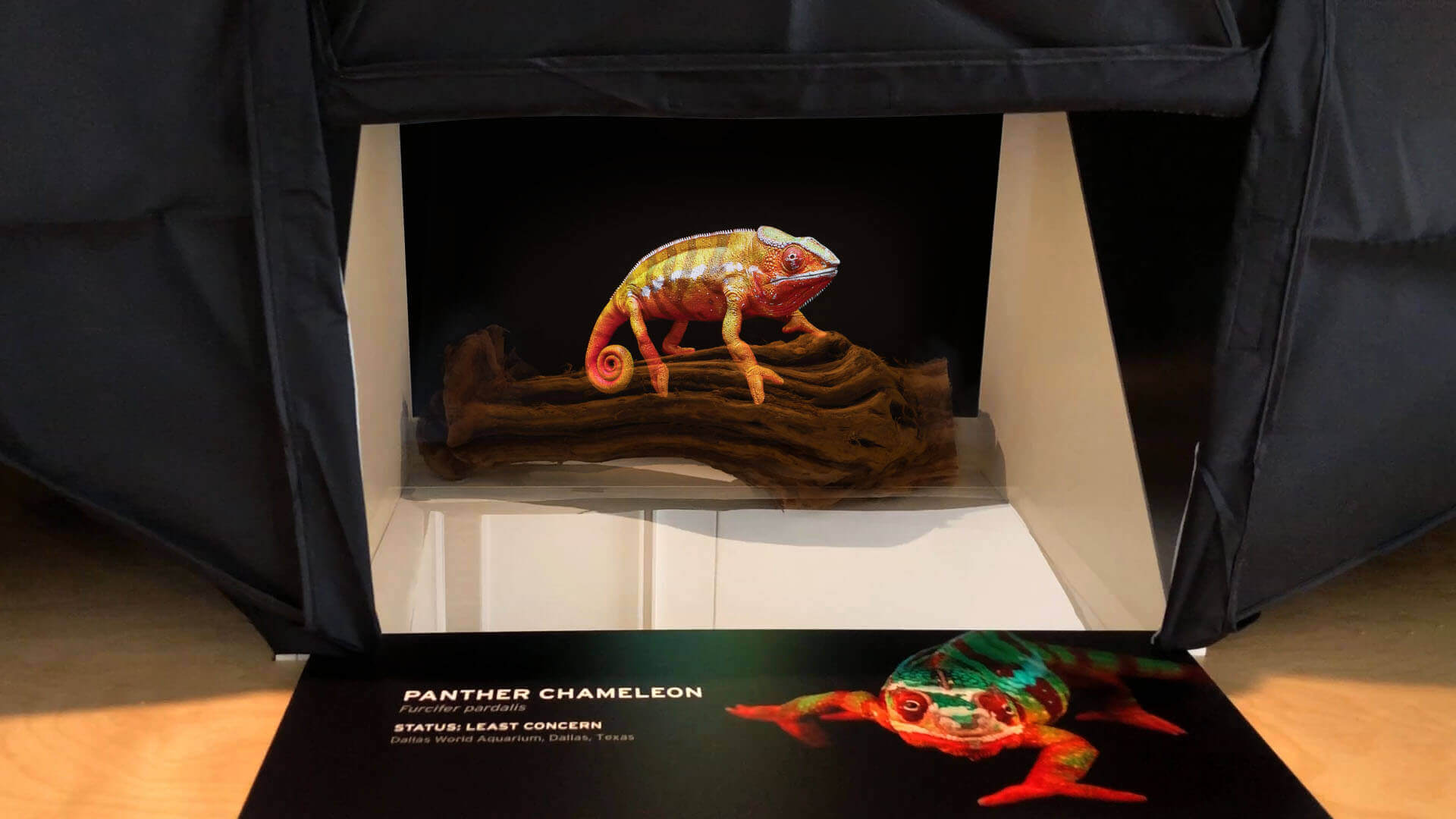
Where Will It Live on Tour?
In the case of traveling exhibitions, flexibility within locations drives design. Will the show be marketed to museum special exhibition galleries (the temporary gallery spaces that museums keep open for traveling exhibits) with robust infrastructure? Some of my favorite museums with special exhibits galleries include The Field Museum in Chicago, LA Natural History Museum, and Utah Museum of Natural History. Or will the show travel to black box spaces (such as the beautiful Oasis Immersion space in Montreal) and other multipurpose venues? Museum galleries might be able to provide higher visibility if the special exhibit is an add-on to the general ticket price, therefore its built-in visitor traffic. Museum galleries may also include staff and docents with subject matter expertise (think primatologists or anthropologists). However, black box spaces offer unique upsides as well. Often the business model can be more financially lucrative as ticket sales can drive enormous attendance, though the operational risks to carry it are much higher. It requires a more self-sufficient model, including an operations budget and a dedicated touring team to ensure the show can function independently and successfully.
Budgeting for Impact and Longevity
A traveling exhibition is both a creative product and a business venture. Establishing the production budget is directly related to mapping out a sustainable business model. How will you recoup CapEx expenses over the tour? I’ve witnessed beautiful, successful traveling exhibits launch for under $750,000 all in, smartly designed, flexible and affordable for host institutions. And I’ve also seen traveling exhibitions with far higher CapEx ($3-5 million+) that were more technologically-driven or rich with real artifacts. Those were able to recoup that investment with a robust business model. Other variables to consider: how many venues are required to break even, and how many more to turn a profit? What are the operational expenses each year on the road, especially for maintenance and updates? Early calculations influence nearly every design and operational decision.
Right-Sizing the Experience
Size directly impacts every aspect of the build, from storytelling to logistics to expense. Based on my own observations, here’s a rough breakdown:
- Small: ~2,500 to 5,000 sq. ft. — ideal for photography galleries and flexible installations.
- Medium: 5,000–7,000 sq. ft. — manageable for most gallery spaces
- Large: 9,000–12,000 sq. ft. — designed for major destinations with high visitor throughput.
- Very Large: 15,000–25,000+ sq. ft. — typically seen for blockbusters.
Choosing the right footprint dictates staffing, ticketing strategies, and marketing potential. Following the pandemic, many institutions began using exterior spaces in creative ways, which inspired more innovative thinking about how to design experiences for diverse spaces and audiences… always a positive trend for the industry IMO!
Dwell Time and Throughput
How long do you expect visitors to stay engaged? Dwell time influences content density, pacing, and visitor flow. Pair this with throughput targets (the number of people ideally passing through per hour or day) to create a seamless guest experience while maximizing revenue potential.
Visitors want to feel immersed and walk away with a sense of value for their time and ticket. Too little content leaves them underwhelmed; too much can create choke points that frustrate guests. At NeoPangea, we often encourage the use of multiple kiosks and screens to manage engagement smoothly. Imagine Exhibitions did this well with Harry Potter: The Exhibition, for which NeoPangea created the interactives and media. There are ample kiosk screens to onboard the visitors to allow them to choose their Hogwarts house, and begin to dive right into the Wizarding World without crowding back-ups.
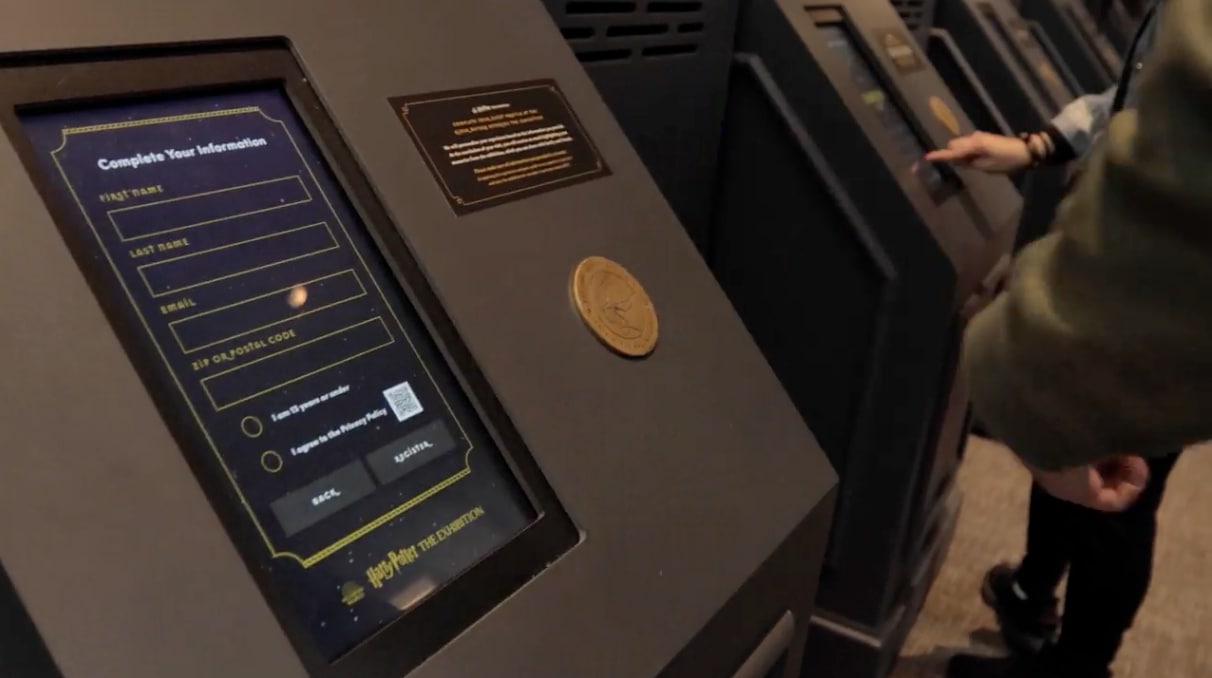
Digital Integration and Hybrid Extensions
Today’s audiences expect content to live beyond the walls of the exhibition. Integrating digital layers like AR experiences, on-demand media, and companion content deepens engagement and extends the story. For National Geographic’s Once Upon a Climb: Stories from Everest exhibition, the team at NeoPangea made use of a pass-through camera to track a LIDAR and photogrammetric informed real-life 3D model of Everest. This was done to show how the Everest Basecamp grows every year from snowy wasteland to booming city and finally a ghost town of discarded trash. The placement and positioning of scenes and characters appeared as if they were miniatures. This means that visitors could see the digital scene mapped over the physical model, helping to reinforce the massive sense of scale.

Another example of integration is the audio guide the NeoPangea created for Imagine Exhibitions for their Discovering King Tut’s Tomb exhibition at the Luxor in Las Vegas. Though it’s not a traveling exhibition, the audio guide could seamlessly marry to the content if it were to tour. For traveling exhibitions, these assets must be designed to be easily updateable so they can adapt to new languages, highlight region-specific connections, or incorporate timely discoveries mid-tour.
At NeoPangea, we’re seeing more clients demand scalable, update-friendly media that travels as seamlessly as the crates themselves.
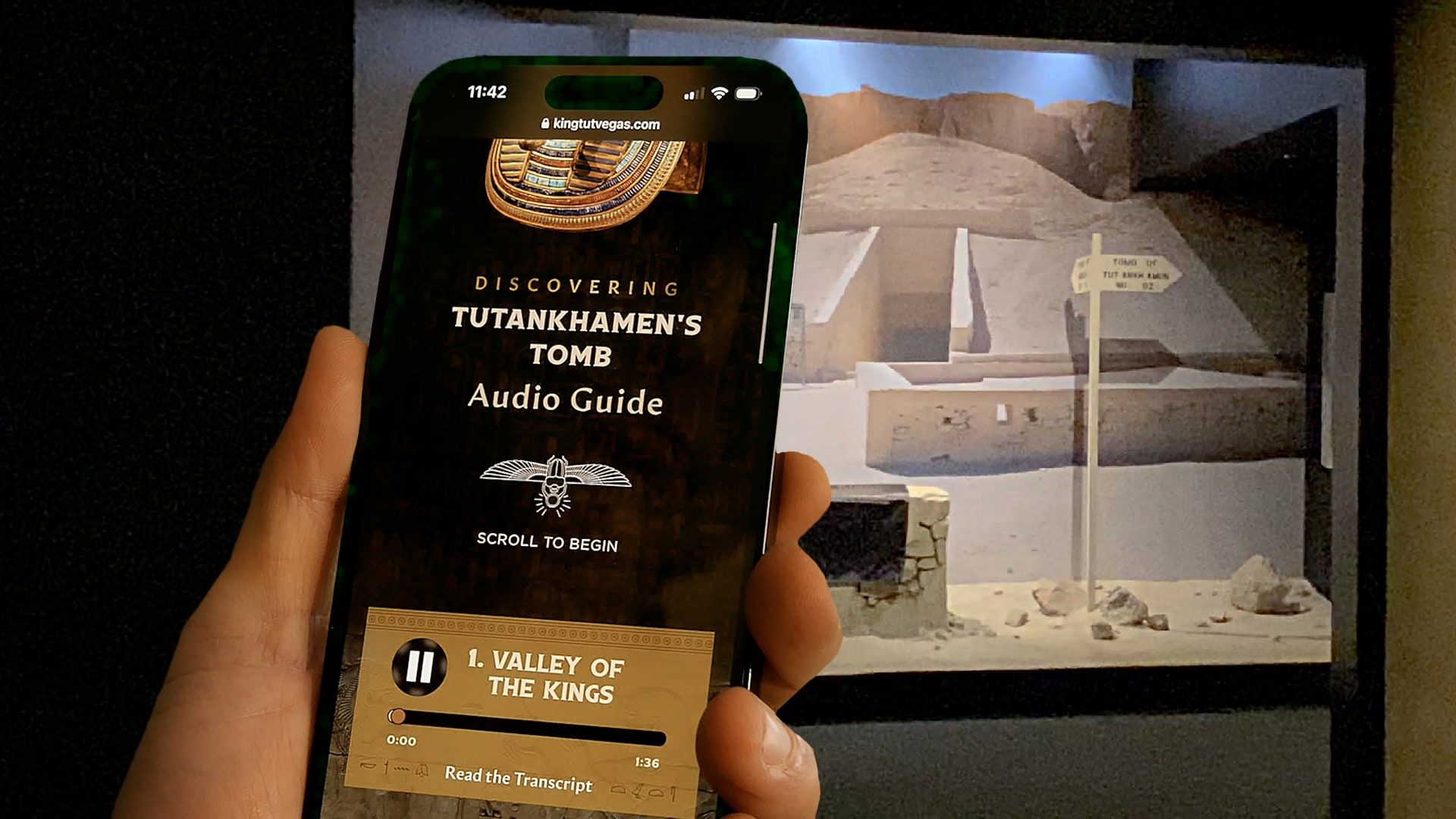
Durability, Sustainability, and Modularity
Touring is tough on exhibitions. Shows must be built to withstand:
- Heavy visitor interaction (including kids testing and trying to hack into every surface!)
- Repeated installations and de-installations city after city
- Crating, shipping, and environmental shifts
Sustainability is also an increasingly important consideration. Finding materials that balance eco-friendly properties with the durability required for constant hands-on engagement can be challenging but worthwhile.
Designing for modularity is critical: components should crate efficiently, move via forklift or pallet jack, and minimize wear over time. Every crate should be built for even weight distribution and include skids to reduce handling damage and ease of transport.
Designing for Accessibility and Inclusion
Traveling exhibitions have the power to reach audiences across cities, countries, and cultures, but only if they’re designed to be accessible to everyone. And accessibility goes beyond meeting ADA or local regulations. It’s about creating an inclusive experience for visitors of all ages, abilities, and backgrounds.
This means thinking holistically about:
- Physical accessibility: ensuring spaces, pathways, interactives, and seating accommodate mobility challenges.
- Sensory considerations: designing with captioning, audio descriptions, tactile elements, and adjustable light and sound levels.
- Cultural and linguistic flexibility: enabling multilingual support and adapting interpretive content for diverse audiences.
Because exhibitions travel, accessibility solutions must also be adaptable. Prioritizing accessibility from the start broadens your reach and ensures the experience fulfills its promise of inspiring all visitors.
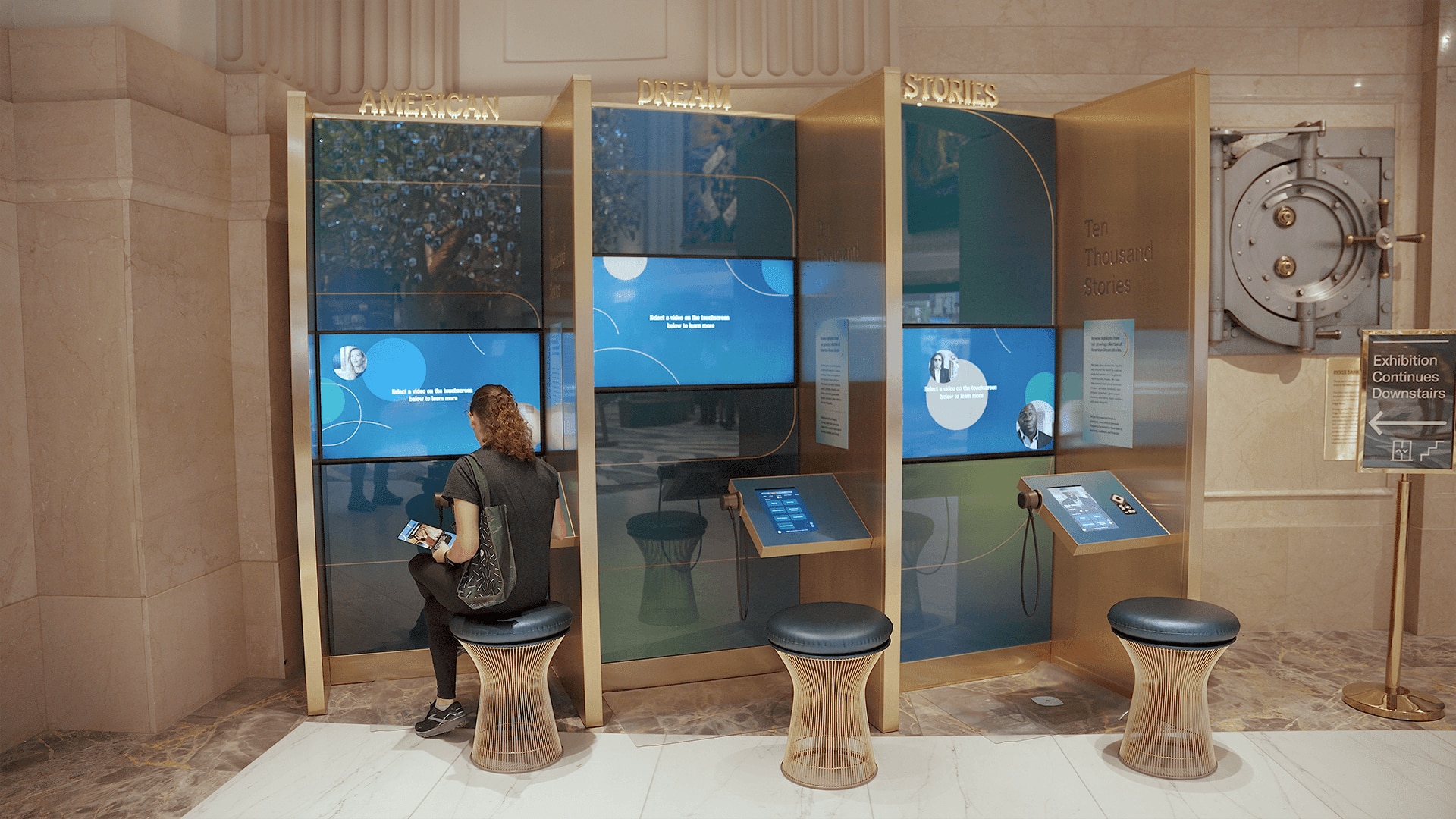
For the Milken Center for Advancing the American Dream (MCAAD), an ambitious and truly stunning building in the heart of Washington, DC, directly across from the White House, NeoPangea created over a dozen bespoke interactives and media that had accessibility top of mind, exploring the future of the American Dream to expand opportunity and economic mobility for all. NeoPangea achieved this through the use of STORM NavPads, and other thoughtful accommodations such as accessible typefaces that are legible in size, color contrast, and font choice; and inclusively designed interactives with key-based input, screenreaders, etc. This experience is not touring, but the thoughtfulness and technology applied to the accessibility components could be transferrable to components within a traveling exhibit.
NeoPangea is also developing interactives with accessibility in mind for another high profile experience opening in Washington, DC next year. And that experience will travel! Shhh, we can’t talk about that one yet, but it will be outstanding!
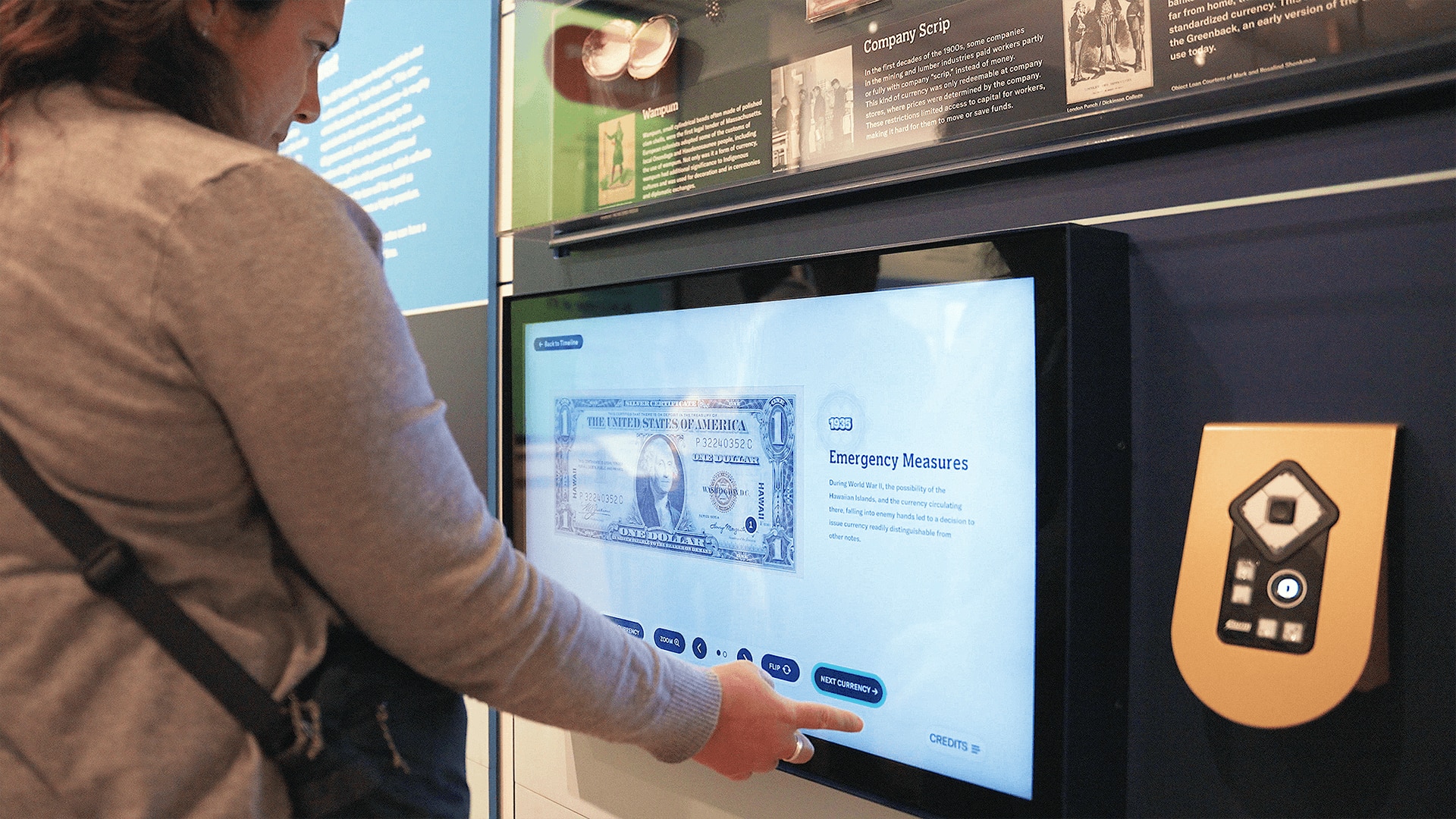
How Will It Travel?
Shipping is one of the most expensive elements of a traveling exhibition tour and can be a key driver of venue appeal. The goal is to minimize truckloads through efficient crate design and careful truck-pack planning.
When artifacts are involved, the complexity rises. Climate-controlled trucks, secure storage, and specialized handling are often required. Precious objects may also require couriers and increased insurance coverage. The upside is that exhibitions with artifacts tend to be especially appealing because they’re on view for only a limited time in each market.
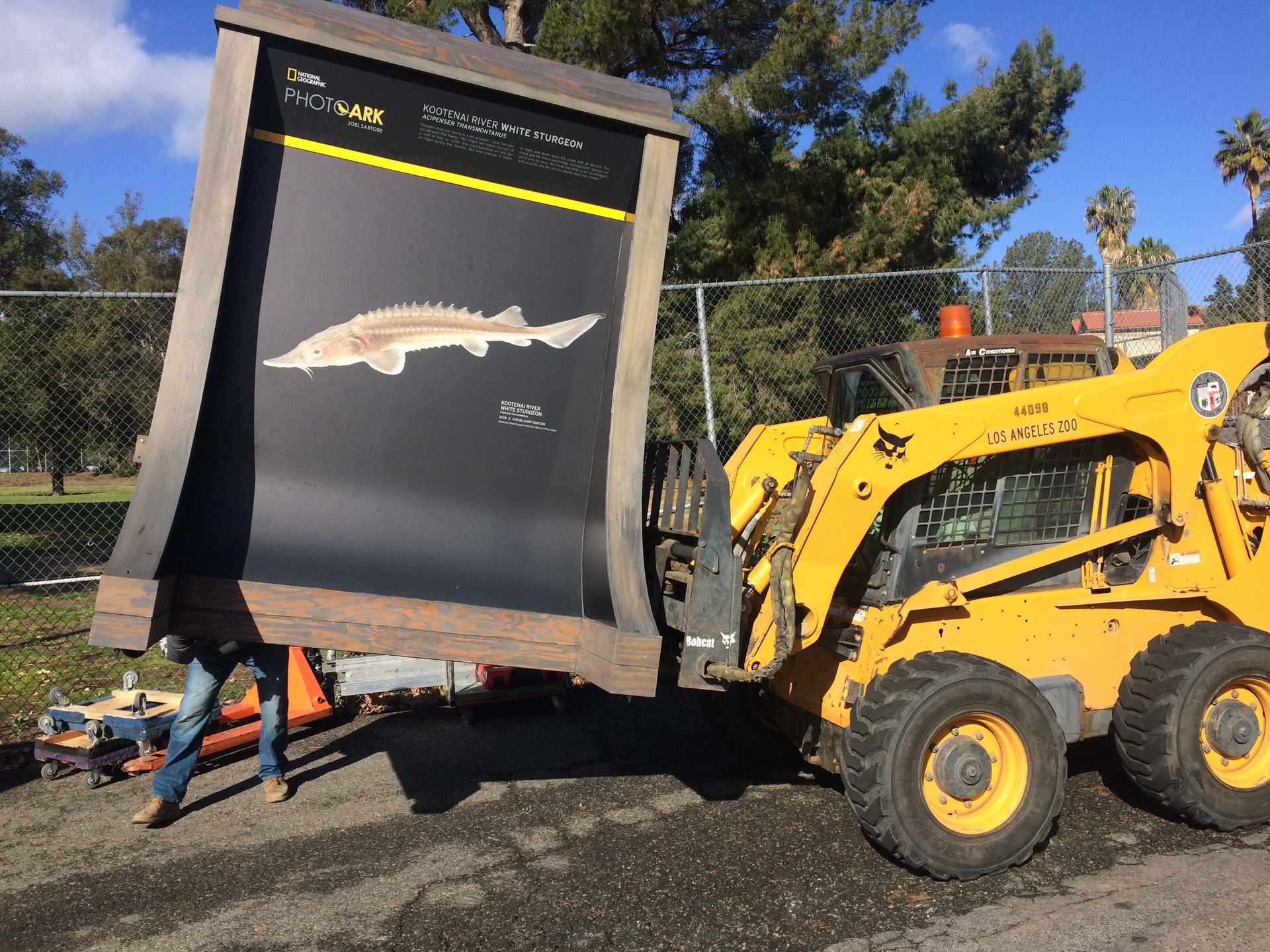
Storage Between Venues
When the exhibition isn’t on display, where will it live? Secure storage is a necessity in the middle of a tour when there isn’t an immediate back-to-back venue, but it must balance these four factors:
- Climate control for preservation
- Security for valuable assets
- Budget-friendly costs
- Proximity to previous or upcoming venues
Planning for downtime is just as important as planning the tour itself. There is also the load-in and load-out expense of engaging a storage solution.
Receiving on Site
No two host institutions are alike. Some offer direct access via loading docks and freight elevators that connect seamlessly to the gallery. Others… don’t. Tight corners, low ceilings, and complex access routes require upfront planning. Reviewing detailed specs with the on-site Operations team and visiting the site early can save significant time and expense. And communication is key! Asking questions in advance sets everyone up for success when installation day arrives.
Marketing
Marketing for a traveling exhibition happens on two levels. First, there’s the audience-facing strategy: creating a strong narrative through websites, advertising, and early social campaigns that set expectations and build buzz. Generally an exhibition comes with a Press Kit and marketing package to assist the host venue’s marketing team. Once the exhibition opens, on-site activations and shareable moments become critical to sustaining momentum and driving word-of-mouth.
Just as important, though, is the B2B “industry marketing” that gets the show booked in the first place. Traveling exhibitions live and die by venue partnerships, which means curating the right sales materials, networking at industry functions like TREX Traveling Exhibits Forum (at AAM, and ASTC), or presenting at ECSITE, and making sure your show has visibility in databases like TREX and Teo internationally. The most successful tours balance both sides: compelling consumer storytelling that fills galleries and strong industry relationships that keep the exhibition on the road.
—------------------------
Traveling exhibitions are where storytelling meets logistics. They bring world-class content to audiences who might never experience it otherwise, but success requires strategic foresight. From understanding your market and the needs of host institutions to designing for modularity and adaptability, every decision has ripple effects across visitor experience, operational budgets, and long-term sustainability.
After touring dozens of shows around the globe, I’ve learned that the best traveling exhibitions balance inspiration with execution. Did I forget anything here? Probably. But what fun is life without a few surprises along the way?






